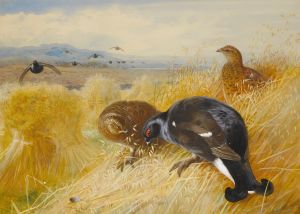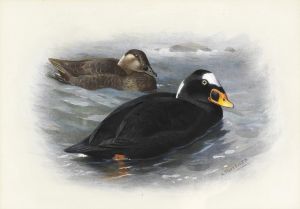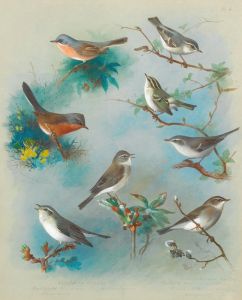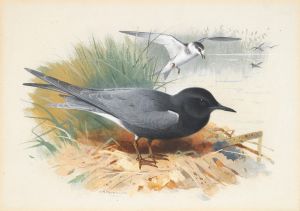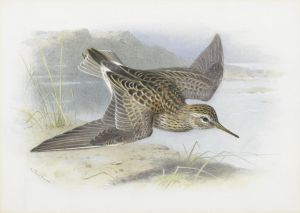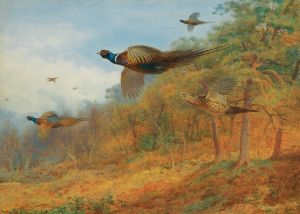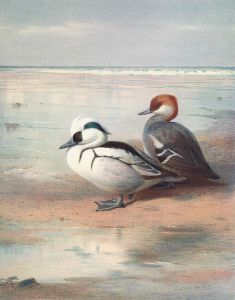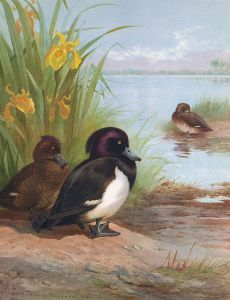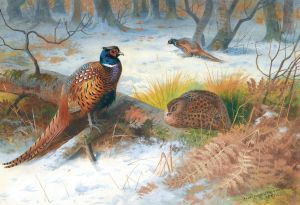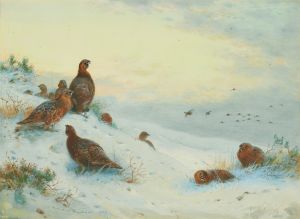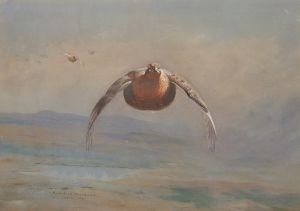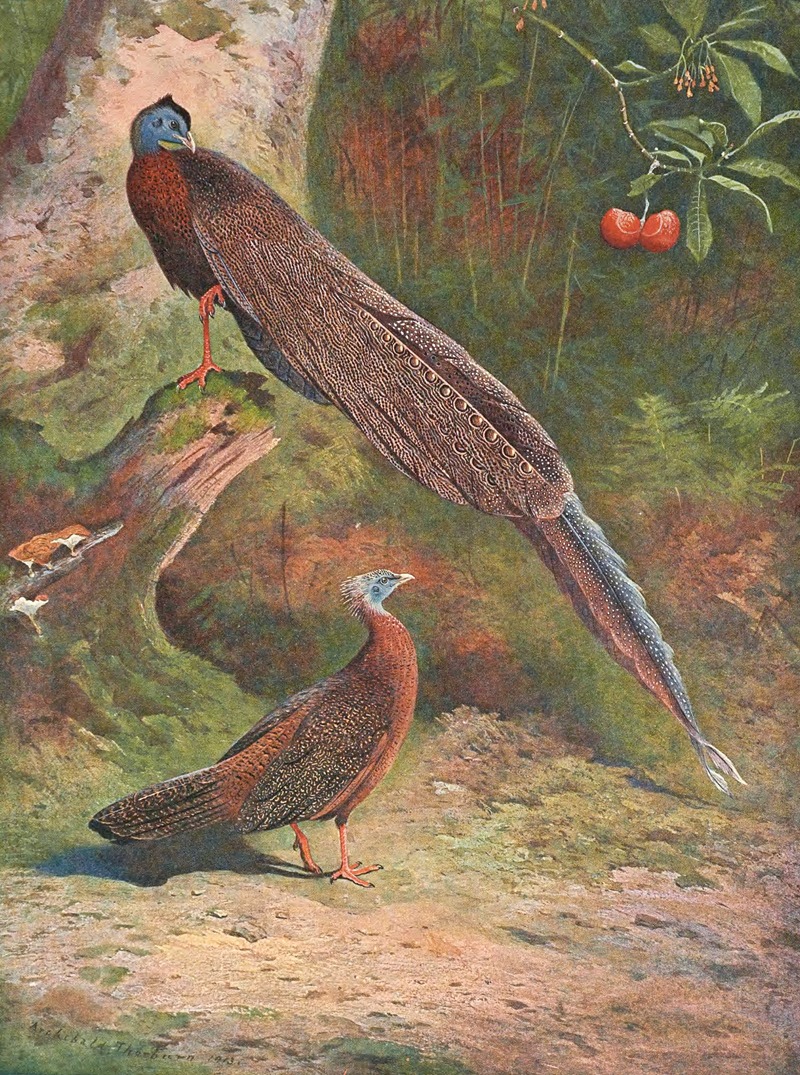
Malay Argus Pheasant
A hand-painted replica of Archibald Thorburn’s masterpiece Malay Argus Pheasant, meticulously crafted by professional artists to capture the true essence of the original. Each piece is created with museum-quality canvas and rare mineral pigments, carefully painted by experienced artists with delicate brushstrokes and rich, layered colors to perfectly recreate the texture of the original artwork. Unlike machine-printed reproductions, this hand-painted version brings the painting to life, infused with the artist’s emotions and skill in every stroke. Whether for personal collection or home decoration, it instantly elevates the artistic atmosphere of any space.
Archibald Thorburn was a renowned Scottish artist and bird illustrator, celebrated for his detailed and lifelike depictions of wildlife, particularly birds. Born on May 31, 1860, in Lasswade, near Edinburgh, Thorburn developed an early interest in art and nature, which he combined to create a prolific career as a wildlife artist. He was particularly known for his ability to capture the essence and vitality of birds in their natural habitats.
One of Thorburn's notable works is the painting of the Malay Argus Pheasant. This painting exemplifies his skill in portraying birds with remarkable accuracy and attention to detail. The Malay Argus Pheasant, scientifically known as Argusianus argus, is a species of pheasant found in the jungles of Southeast Asia, particularly in Malaysia, Thailand, and Indonesia. It is known for its striking plumage and elaborate courtship displays, which Thorburn captured with precision in his artwork.
Thorburn's painting of the Malay Argus Pheasant is characterized by its meticulous detail and vibrant colors, which bring the bird to life on the canvas. The male pheasant, with its long tail feathers and intricate patterns, is depicted in a natural setting, showcasing Thorburn's ability to integrate the subject with its environment seamlessly. This attention to habitat and context is a hallmark of Thorburn's work, as he often painted birds in their natural surroundings to provide a more comprehensive understanding of their behavior and ecology.
Thorburn's technique involved the use of watercolors, which allowed him to achieve a delicate balance of color and light, enhancing the realism of his subjects. His ability to render fine details, such as the texture of feathers and the subtle gradations of color, made his paintings highly sought after by collectors and naturalists alike. Thorburn's work was not only appreciated for its aesthetic qualities but also valued for its scientific accuracy, contributing to the study and appreciation of avian species.
Throughout his career, Thorburn illustrated numerous books and publications on birds and wildlife, cementing his reputation as one of the leading bird artists of his time. His illustrations appeared in works such as "British Birds" by W. H. Hudson and "The Birds of the British Isles" by Lord Lilford, among others. These contributions helped to popularize birdwatching and ornithology, inspiring a greater appreciation for the natural world.
Archibald Thorburn's legacy as an artist endures through his paintings, which continue to be admired for their beauty and precision. His depiction of the Malay Argus Pheasant remains a testament to his skill and dedication to capturing the splendor of wildlife. Thorburn passed away on October 9, 1935, but his work continues to inspire and educate, bridging the gap between art and science.







